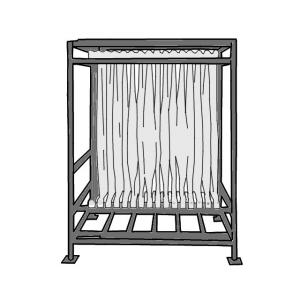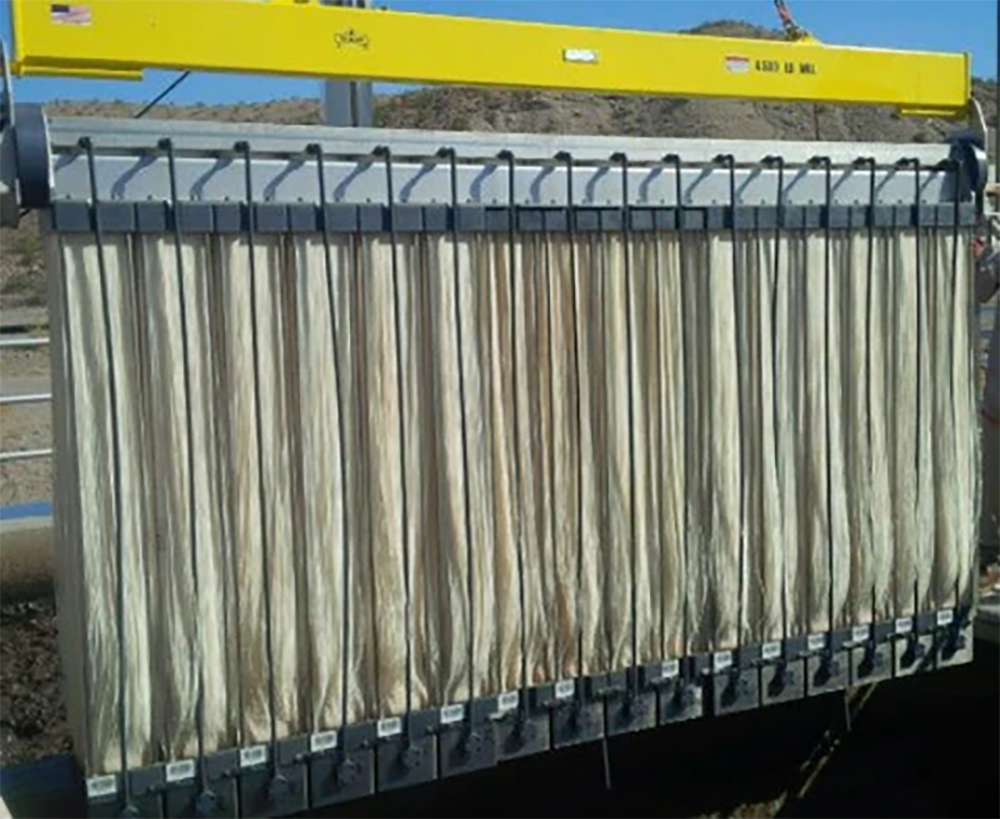Comprehending Membrane Bioreactors: The Future of Wastewater Treatment
Membrane bioreactors (MBRs) represent a noteworthy development in the field of wastewater therapy, integrating biological procedures with advanced membrane layer purification to boost effluent quality. As international water deficiency and rigid regulative frameworks become increasingly pushing concerns, MBR modern technology offers an effective feedback via its capability to reduce footprint and maximize source healing. However, the adoption of MBRs is not without its challenges, which warrant cautious consideration. What are the vital variables affecting their implementation and lasting stability in different contexts? The answers might reshape our approach to wastewater monitoring.
What Are Membrane Layer Bioreactors?

The core elements of MBR systems include a bioreactor where microbial task takes place and a membrane unit that filterings system the blended liquor. This twin performance makes it possible for the synchronised degradation of natural issue and solid-liquid separation in a solitary step. MBRs can operate in both immersed and external arrangements, with immersed systems being a lot more common as a result of their small design and functional efficiency.
The fostering of MBR innovation has actually gotten traction in various applications, varying from municipal wastewater therapy to industrial effluent administration. MBRs are particularly helpful in scenarios where room is rigorous or restricted effluent top quality requirements have to be satisfied. By keeping a high concentration of bacteria within the bioreactor, MBRs enhance the destruction of organic toxins, thereby producing greater treatment performances compared to conventional approaches.
Key Benefits of MBR Technology
The integration of biological therapy with membrane layer purification in MBR systems supplies countless benefits that set it aside from conventional wastewater treatment methods. Among the key advantages is the improved effluent quality. MBRs effectively remove suspended virus and solids, attaining higher levels of filtration that satisfy strict discharge criteria and promote water reuse applications.

One more significant benefit is the minimized sludge manufacturing. MBR systems create much less excess sludge, leading to lower disposal costs and a decrease in environmental impact. The closed nature of the membrane system minimizes the danger of smell discharges and improves general process control.
Finally, MBRs are flexible and adaptable, making them ideal for numerous wastewater kinds, consisting of commercial and local sources. The capability to integrate with advanced therapy modern technologies better boosts their performance, making MBRs an encouraging option for the future of wastewater administration.
Challenges and Limitations of MBRs
While MBR technology supplies countless benefits, it also faces numerous difficulties and limitations that can impact its widespread fostering. One considerable challenge is the high capital and functional costs related to MBR systems. The preliminary investment for membrane layer materials and the necessary framework can be substantial, making it less available for smaller sized markets or towns.
In addition, membrane fouling continues to be an essential problem that can diminish system performance and rise maintenance demands. Fouling happens when solids, raw material, or microbes collect on the membrane layer surface, bring about decreased leaks in the structure and requiring regular cleansing or replacement.
An additional limitation includes the intricacy of the technology. MBR systems need skilled workers for procedure and upkeep, which can be a barrier in regions with restricted technological know-how. Moreover, the disposal of invested membrane layers presents environmental worries, as the products are see this site frequently not naturally degradable and can add to throw away management challenges.
Lastly, while MBRs can efficiently treat a wide see this website variety of wastewater, they might not appropriate for all applications, particularly those with high concentrations of fats, oils, and oils, demanding more research and innovation to address these limitations.
Applications of Membrane Layer Bioreactors
In numerous fields, membrane layer bioreactors (MBRs) have actually become a flexible option for wastewater treatment (Membrane Bioreactor). Their applications cover community, industrial, and farming setups, showcasing their versatility and efficiency in diverse settings. In metropolitan wastewater therapy plants, MBRs substantially improve effluent high quality, permitting water reuse and reducing the ecological effect of discharged wastewater
Industrially, MBRs are employed in food and drink processing, fabric production, and pharmaceutical production, where they properly deal with high-strength waste streams. Their capability to take care of differing and changing lots pollutant focus makes them especially useful in these industries. In addition, MBRs promote the removal of virus, put on hold solids, and natural issue, adding to compliance with stringent discharge regulations.
In agriculture, MBRs are significantly utilized for treating farming overflow and livestock wastewater, making it possible for the recuperation of nutrients for fertilizer production. They additionally help in the treatment of greywater for watering, advertising sustainable water monitoring techniques.
The versatility of MBRs is more evidenced by their integration with other innovations, such as anaerobic digestion and advanced oxidation processes, enhancing reference overall performance and resource recovery in wastewater treatment systems.
The Future of Wastewater Treatment
Innovations in technology and an expanding focus on sustainability are shaping the future of wastewater treatment. Membrane bioreactors (MBRs) exemplify this shift by integrating organic treatment processes with membrane layer purification, leading to premium effluent appropriate for reuse. The trend in the direction of circular economic situations is motivating centers to embrace MBRs for their capacity to recoup resources, such as water and nutrients, from wastewater.
Technologies in membrane materials and arrangement are enhancing the effectiveness and long life of MBR systems, reducing functional prices and power consumption. Smart modern technology integration, consisting of real-time monitoring and automated control systems, is additional optimizing performance and making it possible for predictive upkeep, thus lessening downtime.
Additionally, social expectations and governing stress are pressing municipalities and industries to embrace even more lasting practices. Membrane Bioreactor. The shift in the direction of decentralized wastewater therapy solutions is acquiring traction, enabling local treatment that lowers transport expenses and energy usage
Conclusion
Membrane bioreactors (MBRs) stand for a transformative approach to wastewater treatment, incorporating organic processes with advanced membrane innovation. The benefits of MBRs, including enhanced effluent top quality, reduced spatial requirements, and reduced sludge production, position them as a sensible option amid expanding urbanization and stricter ecological guidelines. Despite existing difficulties, the continued technology in membrane products and operational strategies assures to boost the efficiency and fostering of MBRs, guaranteeing their pivotal duty in the future of sustainable wastewater monitoring.
Membrane bioreactors (MBRs) represent a noteworthy technology in the field of wastewater therapy, integrating organic procedures with sophisticated membrane filtration to enhance effluent high quality.Membrane bioreactors (MBRs) integrate organic therapy processes with membrane filtering to properly deal with wastewater.The integration of organic therapy with membrane layer filtering in MBR systems supplies many benefits that establish it apart from typical wastewater therapy methods. Membrane bioreactors (MBRs) exemplify this shift by integrating biological therapy procedures with membrane filtration, resulting in premium effluent suitable for reuse.Membrane layer bioreactors (MBRs) stand for a transformative strategy to wastewater therapy, integrating biological processes with innovative membrane layer innovation.
Comments on “The Economic Benefits of Installing a Membrane Bioreactor for Your Facility”